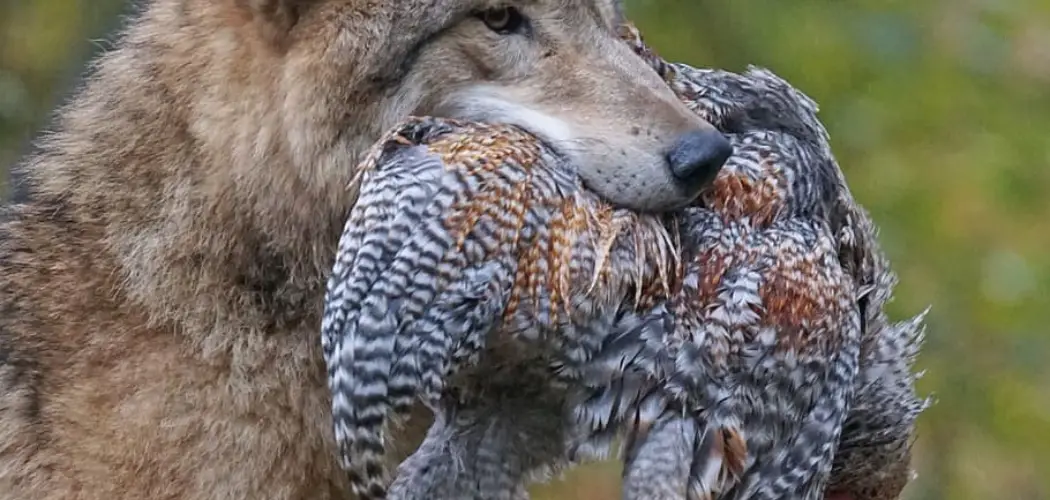Foxes are intelligent and cunning animals that have a natural instinct to hunt. If you have chickens on your property, it’s very likely that a fox will make its way onto your land in search of an easy meal.
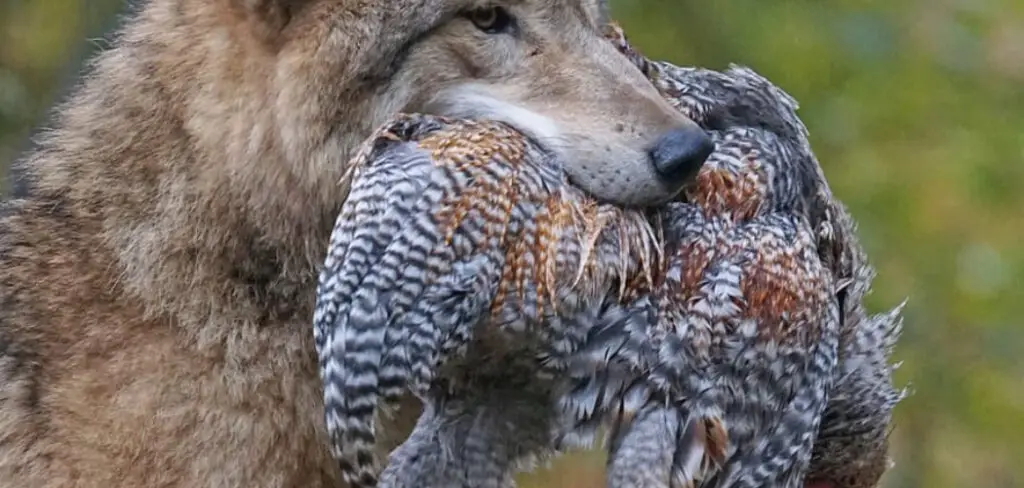
This can be frustrating and alarming for chicken owners, as foxes can quickly decimate a flock if left unchecked. Foxes are known to be sneaky and cunning creatures that often prey on small animals such as chickens.
As a chicken owner, it can be frustrating and devastating to find your beloved poultry being attacked and killed by a fox. This guide on how to catch a fox that is eating my chickens will provide you with tips on how to catch a fox that is eating your chickens.
Necessary Items
The first step in catching a fox is to gather the necessary items. Here is a list of recommended items that will help you successfully catch a fox:
- Live Trap: A live trap is a humane way to catch and relocate the fox without causing it any harm. Make sure to choose a size appropriate for catching a fox.
- Bait: The type of bait you use can make all the difference. Some popular bait options for catching a fox include raw meat, fish or cat food.
- Gloves: When handling traps and bait, it’s important to wear gloves to prevent your scent from being left behind.
- Camouflage Material: This will help conceal the live trap and make it less noticeable to the fox.
- Protective Gear: It’s important to protect yourself from any potential attacks by wearing thick clothing and boots.
- Relocation Site: Before catching the fox, it’s important to have a relocation site planned out. This should be at least 10 miles away from your property to ensure that the fox does not return.
8 Things to Know Before You Start
1) Understanding the Behavior of Foxes
Before taking any action, it’s important to understand the behavior of foxes. They are opportunistic hunters and will go after easy prey such as chickens that are left unattended or not properly secured in their coop. Foxes are also known to be nocturnal animals, meaning they are most active at night. This is when they are most likely to attack your chickens.

2) Identifying Signs of a Fox
If you suspect that a fox is on your property, there are certain signs to look out for. These include missing or dead chickens, scattered feathers, and tracks around the chicken coop. If you come across these signs, it’s important to act quickly to prevent further loss of your poultry.
3) Knowing the Laws and Regulations
It’s important to check with your local laws and regulations before attempting to catch a fox. In some areas, it may be illegal to trap or relocate wild animals without a permit. It’s best to consult with your local wildlife agency for guidance.
4) Choosing the Right Time
Timing is crucial when it comes to catching a fox. As mentioned earlier, they are most active at night. However, if you’re not comfortable going out after dark, dawn and dusk can also be good times to set up your trap.
5) Properly Preparing the Trap
Before setting up your trap, make sure it is in good working condition. Test the mechanism and ensure that the bait is securely attached. Additionally, place some leaves or other natural material inside the trap to make it more inviting for the fox.
6) Setting Up Camouflage
To increase your chances of catching a fox, set up camouflage around the live trap. This can include branches, leaves, and other natural materials to conceal the trap. It’s important to make sure that the trap is not completely hidden, as this can prevent the fox from entering.
7) Checking Your Trap Regularly
It’s important to check your live trap regularly, at least twice a day. This ensures that the fox does not remain trapped for an extended period of time, which can cause distress and potential harm to the animal.
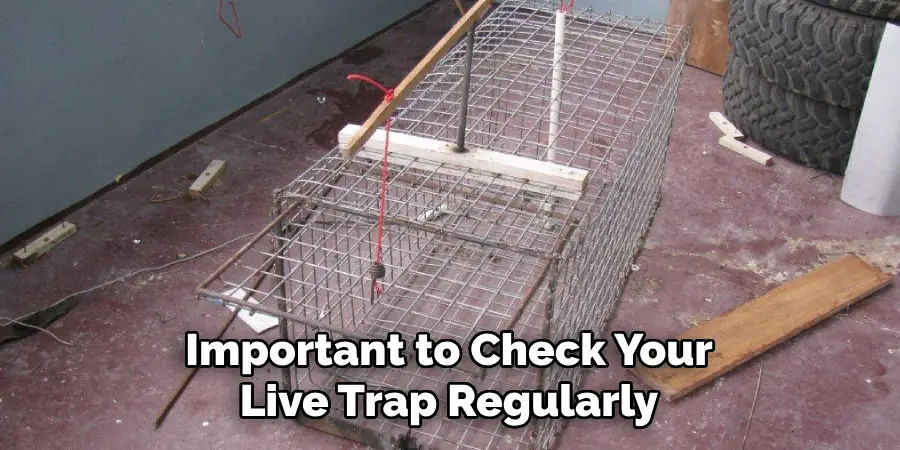
8) Relocating the Fox
Once you have successfully caught a fox, it’s important to relocate it as soon as possible. As mentioned earlier, the recommended distance is at least 10 miles from your property. When releasing the fox, make sure to wear protective gear and handle the trap with caution to avoid any potential attacks.
Catching a fox that is eating your chickens requires patience, planning, and the right tools. It’s important to act quickly and follow these tips on how to catch a fox that is eating my chickens to prevent further loss of your poultry.
Remember to always prioritize the safety and well-being of both the fox and yourself during this process. By taking appropriate measures, you can successfully catch and relocate the fox, allowing your chickens to roam freely without fear.
12 Steps on How to Catch a Fox That is Eating My Chickens
Step 1: Gather Necessary Items
As mentioned earlier, make sure to gather all the necessary items before attempting to catch a fox. This includes a live trap, bait, gloves, camouflage material, protective gear, and a suitable relocation site.
Step 2: Understand Fox Behavior
Before taking any action, it’s important to understand the behavior of foxes, as they are cunning and opportunistic hunters. If you know what to look out for, it can help you effectively catch the fox.
Step 3: Identify Signs of a Fox
Look for signs of a fox on your property, such as missing or dead chickens, scattered feathers, and tracks near the chicken coop. This will help confirm if there is indeed a fox present and allow you to take necessary action.
Step 4: Check Local Laws and Regulations
Make sure to check with your local wildlife agency for any laws or regulations regarding trapping and relocating wild animals. It’s important to follow these guidelines to avoid any legal issues. So, make sure you are aware of the rules and regulations in your area.
Step 5: Choose the Right Time

Timing is crucial when it comes to catching a fox. Decide on the right time for you to set up the trap, keeping in mind that foxes are most active at night but can also be active during dawn and dusk. But make sure you are comfortable with the chosen time.
Step 6: Prepare the Trap
Before setting up your trap, ensure that it is in good working condition and securely attach the bait. Also, add some natural material inside the trap to make it more inviting for the fox. Never use poisoned bait, as it can harm the animal and other non-targeted animals.
Step 7: Set Up Camouflage
To increase your chances of catching a fox, set up camouflage around the live trap. This will help conceal the trap and make it more inviting for the fox to enter. More importantly, ensure that the trap is not completely hidden, as this can prevent the fox from entering.
Step 8: Place Bait
Place the bait inside the trap in a way that will trigger the mechanism when the fox enters. The right type of bait can significantly increase your chances of catching a fox. Go for food items that are irresistible to foxes, such as raw chicken pieces or tuna.
Step 9: Check the Trap Regularly
It’s crucial to check your live trap regularly, at least twice a day. This ensures that the fox is not trapped for an extended period of time, which can cause distress and potential harm to the animal. Never leave the fox trapped for more than 24 hours.
Step 10: Relocate the Fox
Once you have successfully caught a fox, it’s important to relocate it as soon as possible. As mentioned earlier, the recommended distance is at least 10 miles from your property. Make sure to wear protective gear and handle the trap with caution when releasing the fox.
Step 11: Repeat if Necessary
It’s possible that you may need to repeat the process multiple times before successfully catching a fox. This is normal, and it’s important to remain patient and persistent in your efforts. If you do not catch a fox within a few days, consider changing the location or type of bait.
Step 12: Take Preventative Measures
After successfully catching a fox, make sure to take preventative measures to protect your chickens from future attacks. This can include securing your chicken coop and using deterrents such as motion-activated lights or sound devices.
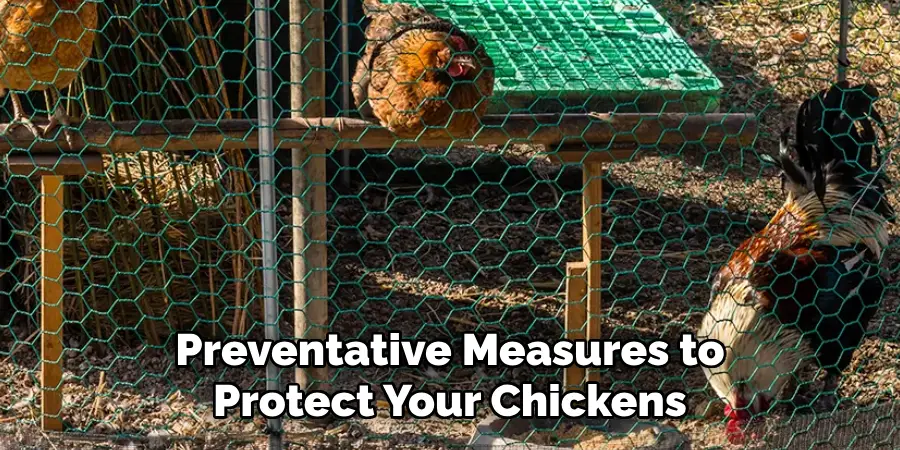
Regularly checking for signs of a fox and taking precautionary measures can help prevent further loss of your poultry. So, it’s important to be proactive in protecting your chickens even after successfully catching a fox. Remember, prevention is better than cure!
8 Things to Avoid When Catching a Fox That is Eating My Chickens
1. Using Inhumane Trapping Methods
When trapping a fox, it’s important to use humane and ethical methods. Avoid using leg-hold traps or any other trapping device that can cause harm or unnecessary suffering to the animal. If possible, use live traps that allow for the safe relocation of the fox.
2. Leaving Traps Unattended
Never leave a trap unattended for long periods of time. This can cause distress and harm to the trapped animal, as well as increase the chances of non-targeted animals getting caught in the trap. Regularly checking and monitoring your traps is crucial for both the safety of the fox and other animals.
3. Using Poisoned Bait
Using poisoned bait is not only inhumane, but it can also harm non-targeted animals and potentially cause legal issues. It’s important to use natural food items as bait that are safe for wildlife. But make sure to avoid using bait that may attract other predators to your property.
4. Ignoring Local Laws and Regulations
Make sure to educate yourself on the laws and regulations regarding trapping and relocating wild animals in your area. Following these guidelines not only ensures that you are acting ethically, but also helps protect the welfare of wildlife.
5. Attempting to Catch a Fox Without Proper Knowledge
It’s important to have a good understanding of fox behavior and the trapping process before attempting to catch a fox. This will not only increase your chances of success, but it also ensures that you are taking appropriate measures to protect both the fox and yourself.
6. Using Insufficient or Poorly Maintained Traps
Make sure to use high-quality traps that are suitable for catching foxes. Insufficient or poorly maintained traps can increase the risk of injury and escape, making it difficult to catch the fox. If possible, seek advice from a professional on the best type of trap to use.

7. Not Taking Necessary Safety Precautions
When handling traps and releasing caught animals, it’s important to take necessary safety precautions. This includes wearing protective gear such as gloves and avoiding direct contact with the fox. Make sure to also have a plan in place for releasing the fox in a safe and remote location.
8. Giving Up Too Quickly
Catching a fox can take time and patience, especially if you are dealing with a clever predator. It’s important to remain persistent and not give up after a few unsuccessful attempts.
With the right methods on how to catch a fox that is eating my chickens and perseverance, you can successfully catch a fox that is eating your chickens. So, don’t get discouraged and keep trying until you find success. Remember, the safety of your poultry is worth the effort!
8 Additional Tips for Protecting Your Chickens from Foxes
1. Secure Your Chicken Coop
Ensure that your chicken coop is fully secured with sturdy fencing and a locking mechanism to keep foxes out. Regularly inspect for any holes or weak spots in the fence and promptly repair them. While foxes are good diggers, a secure fence will make it more difficult for them to enter.
2. Use Deterrents
There are various deterrents that you can use to keep foxes away from your property. These include motion-activated lights or sound devices, which can startle and scare off foxes. You can also consider using hardware cloth around your chicken coop, as foxes are not able to dig through this material.
3. Keep Your Property Clean
Foxes are attracted to food sources, so make sure to keep your property clean and free of any potential food scraps or garbage that may attract them. This includes keeping your chicken feed stored in secure containers and regularly cleaning up any spilled feed.

4. Install a Roof
Installing a roof over your chicken coop can provide an extra layer of protection from predators like foxes. It also helps to keep your chickens safe from aerial attacks by other birds of prey. If you are unable to install a full roof, consider using netting over your chicken run.
5. Get a Guard Dog
Consider getting a guard dog that is trained to protect chickens and other poultry from predators. A well-trained guard dog can help deter foxes and other predators from entering your property and harming your chickens.
6. Remove Potential Hiding Spots
Foxes are known to hide in bushes and other areas of dense vegetation. By regularly trimming and removing these potential hiding spots on your property, you can make it less attractive for foxes to come near.
7. Keep Chickens Confined During Risky Times
During times when foxes are more active, such as dawn and dusk, consider keeping your chickens confined to their coop or run. This reduces the risk of them being attacked by a fox and gives you peace of mind knowing they are safe.
8. Stay Vigilant
It’s important to regularly check for any signs of a fox, such as tracks, droppings, or feathers. If you do find evidence of a fox, take immediate action to secure your property and protect your chickens. By staying vigilant, you can prevent any potential attacks before they happen.
By avoiding these common mistakes and following these additional tips on how to catch a fox that is eating my chickens, you can effectively protect your chickens from foxes. Remember to always prioritize the safety and well-being of both the wildlife and your own animals when dealing with predator control.
Frequently Asked Questions
Can Foxes Be Trained to Stay Away From My Property?
Foxes are wild animals and cannot be trained like domesticated animals. However, by following the tips mentioned above, you can effectively deter them from entering your property. Additionally, there are commercial fox deterrents available that may also be effective.
Can I Relocate a Fox That Is Eating My Chickens?
It is not recommended to relocate a fox that has been caught eating your chickens. Not only can this potentially harm the fox by disrupting its natural habitat and food source, but it may also lead to further issues with other predators in the new location. It is best to handle the situation in a safe and humane manner, such as using deterrents or consulting with a professional for help.
What Should I Do If My Chicken Is Attacked By a Fox?
If your chicken has been attacked by a fox, it’s essential to seek immediate medical attention for the injured bird. Contact your local wildlife agency or a licensed veterinarian for guidance on how to handle the situation. Additionally, you should take steps to secure your property and prevent any further attacks from occurring.
Remember, prevention is key in protecting your chickens from foxes! So, be proactive and stay informed about proper predator control methods. Your chickens will thank you for it!
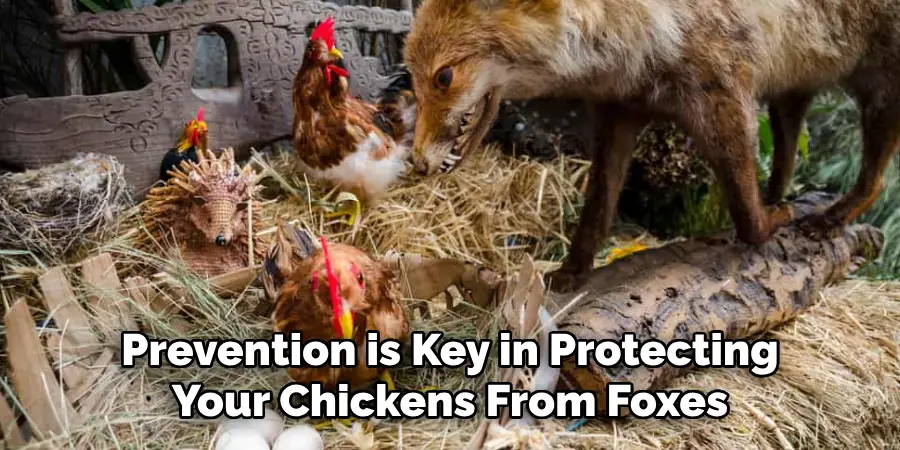
Conclusion
By taking the necessary precautions and implementing these tips on how to catch a fox that is eating my chickens, you can successfully protect your chickens from foxes. It’s important to remember that foxes are wild animals and should be treated with respect and caution.
By coexisting peacefully with these clever predators, we can maintain a healthy balance in our ecosystem while also keeping our domesticated animals safe. So, keep learning about effective predator control methods and continue to prioritize the well-being of all animals.
So, don’t get discouraged and keep trying until you find success. Remember, the safety of your poultry is worth the effort! By implementing the tips mentioned in this guide, you can effectively protect your chickens from foxes and maintain a safe and healthy environment for both wildlife and domesticated animals. Keep learning about proper predator control methods and stay proactive in keeping your chickens safe.

